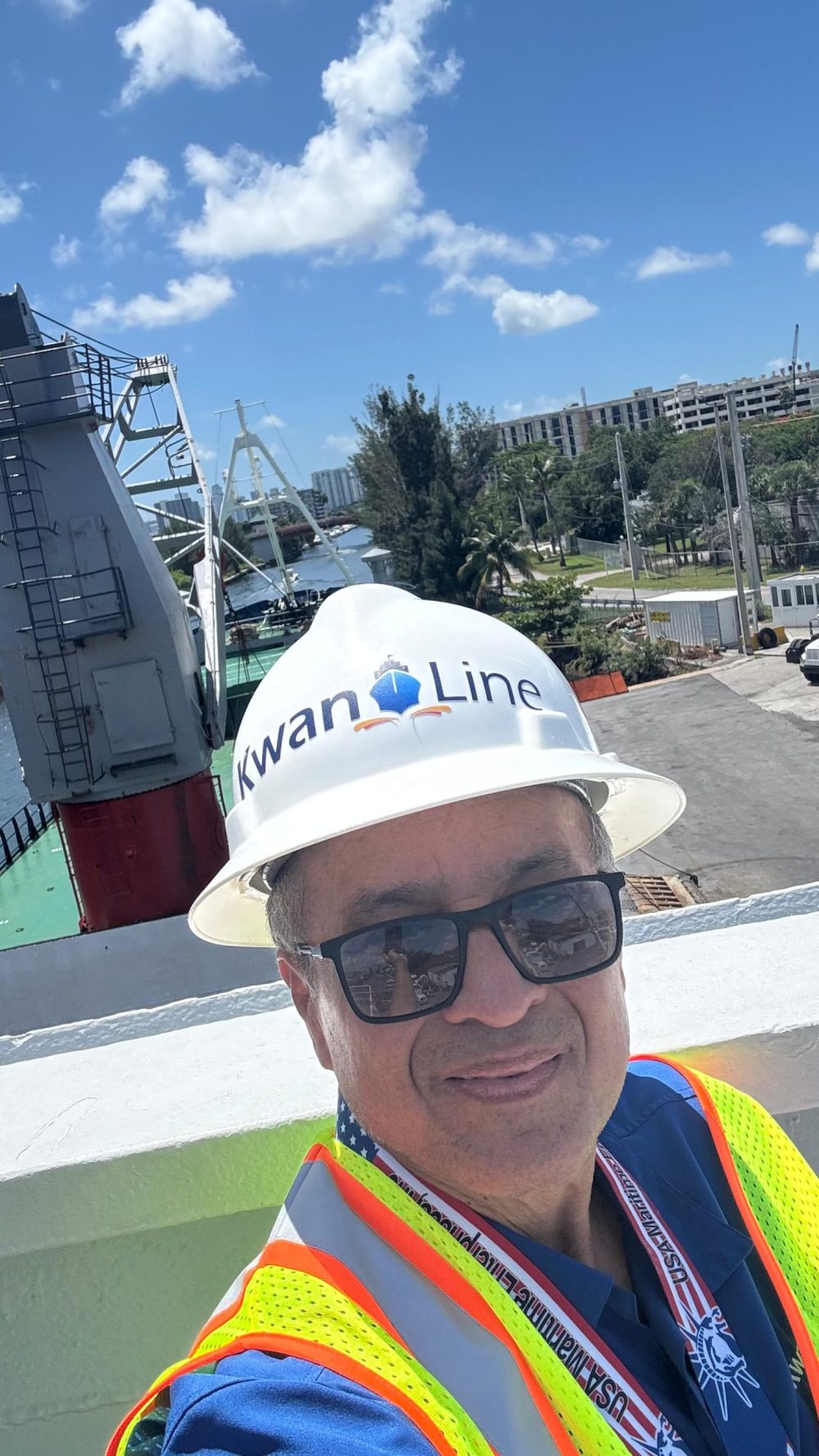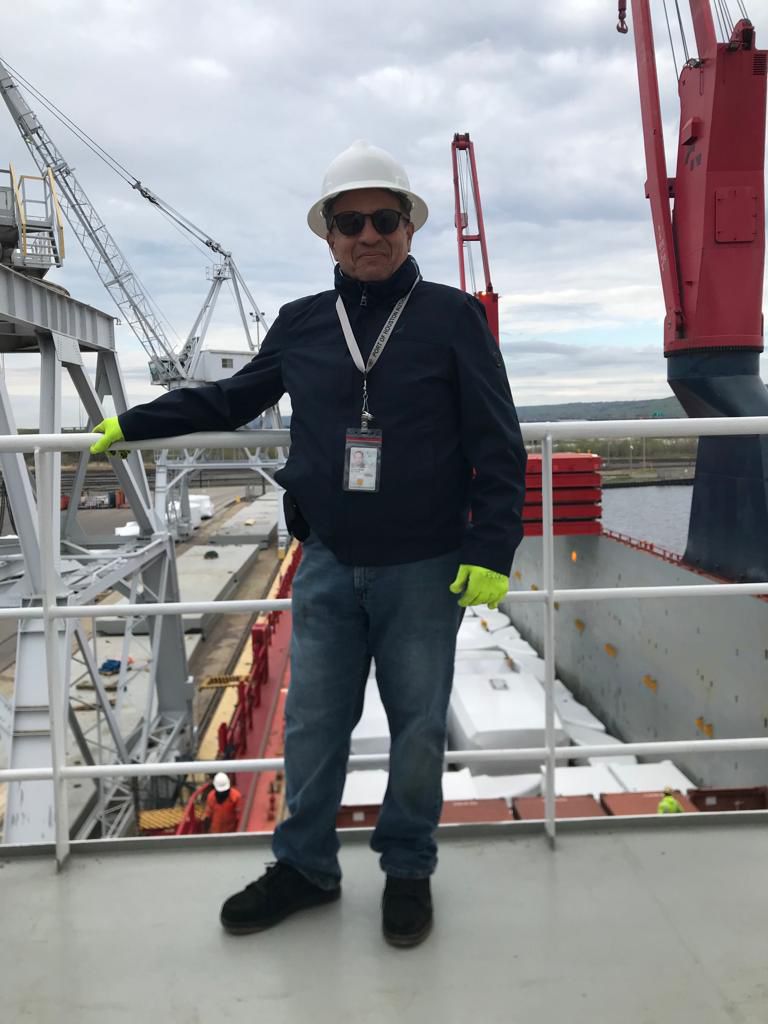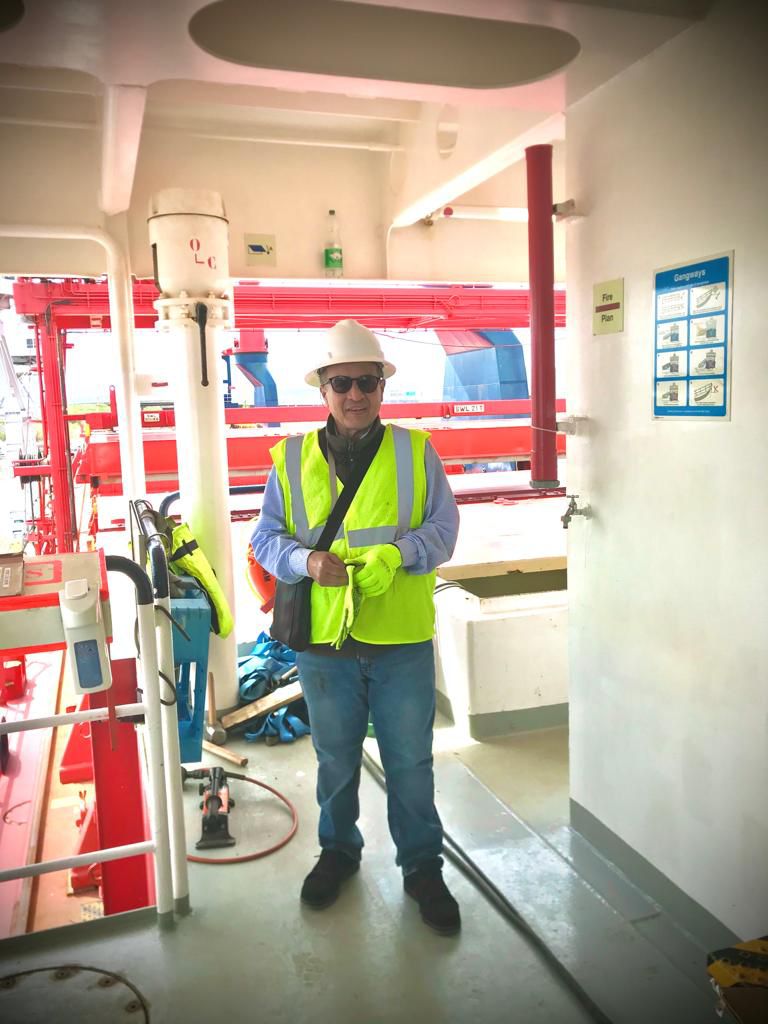TheNavalArch’s Interview Series is an endeavor to get insights from the best engineering and business brains in the industry and present them to its users for the larger benefit of the maritime community. Leaders share their experiences and ideas that readers can gain from.
TheNavalArch Interview Series – Featuring Victor Valera
Chartering Director, Double Ace Cargo (Miami, USA)
Introduction
In this edition of TheNavalArch Interview Series, we speak with Mr. Victor Valera, Chartering Director at Double Ace Cargo, Miami. A Master Mariner turned chartering professional, Victor shares his journey from the bridge to the boardroom—offering insights on heavy-lift operations, planning, and how close collaboration between engineering and chartering teams ensures safe, efficient project execution.

Chartering Director
Double Ace Cargo
Interview
1. You started your career at sea as a vessel master and later transitioned to shore-side management and chartering. Can you share your personal journey and what motivated that transition?
I began my career as a Third Navigation Officer and advanced to Chief Officer and Master on bulk carriers and project cargo vessels. Those years at sea gave me hands-on experience with complex cargoes and operational challenges. Moving ashore, I wanted to apply that knowledge in chartering and shipping management, bridging commercial decisions with real-world maritime operations.
“Moving ashore allowed me to bridge commercial decisions with real-world maritime operations.”
2. Leading the Chartering Division at Double Ace Cargo, what were some of the early challenges you faced in building and establishing the division, and how did you overcome them?
The main challenge was earning client trust while building a structure for both project cargo and liner services under the KWAN LINE brand within Double Cargo Group.
My deep knowledge of ports across the Americas and Caribbean proved a strong advantage, helping us anticipate local conditions and regulations for customers from other continents. With transparent communication and a solid technical foundation, we built a reputation as a reliable partner for both heavy-lift projects and scheduled sailings in the region.
3. Having been both on deck and on shore, how has your seafaring background influenced the way you approach chartering and project cargo management today?
My seafaring background shapes the way I assess risk and plan operations. At sea, every decision had immediate safety and efficiency consequences, and I carry that mindset into chartering. It helps me balance commercial needs with operational realities and identify potential challenges before they escalate.
“At sea, every decision had immediate safety and efficiency consequences—and that discipline stays with you.”

4. Heavy-lift and project cargoes come with unique risks and complexities. From your experience, what are some of the most critical factors in ensuring a safe and efficient loadout?
Success in heavy-lift operations comes down to planning, communication, and strict safety standards. Every stakeholder—from engineers and crew to surveyors—must work from the same method statement with no assumptions. On-site leadership is essential to ensure the plan is executed exactly as designed.
5. We worked together on a condenser loadout project where engineering played a central role. In your view, how important is close coordination between chartering teams and engineering teams during such operations?
Coordination between chartering and engineering is vital. The naval architects provide the technical foundation—stability, strength, and feasibility—while the chartering team secures the right vessel and commercial framework. When aligned, as in the condenser project, risks are minimized and operations run safely and on schedule.
“When engineering and chartering align, risks are minimized and operations run safely and on schedule.”
6. In chartering, there’s often a tension between commercial pressures and operational realities. How do you balance cost efficiency with safety and technical compliance?
Safety and compliance are not optional—they must guide every decision. Cost efficiency only works when aligned with technical input from engineers and operators. By offering clients realistic options and being transparent about risks, we achieve competitive yet fully compliant solutions.
7. From your vantage point, what are some of the most common mistakes or oversights you see in heavy-lift/project chartering, and what lessons would you pass on to others in the industry?
A common mistake is underestimating pre-planning or assuming a port or vessel can handle cargo without verification. Neglecting proper lifting plans, lashing, securing, or stability checks is another serious oversight.
Equally important is selecting the proper vessel and an experienced crew, as project cargo demands specialized knowledge.
The lesson is clear: every assumption must be tested, and every plan validated by professionals with the right expertise.
“Every assumption must be tested, and every plan validated by professionals with the right expertise.”

8. The shipping industry is under growing pressure to digitalize and decarbonize. How do you see these forces shaping the future of project cargo and offshore chartering?
Digitalization is making chartering more efficient and transparent, while decarbonization is reshaping fleet choices and logistics chains. Project cargo charterers must now consider environmental performance alongside cost and capacity. Those who adapt early will have a clear advantage as regulations tighten.
9. Looking back at your career so far, is there a project or achievement that stands out as particularly meaningful or transformative for you?
The Guadeloupe geothermal condenser project remains a defining achievement. It required precise coordination—landing two massive condensers on a remote beach with landing craft, heavy-haul trailers, and detailed ballasting. Delivering it safely under such conditions showcased the strength of planning and teamwork.
“Delivering those condensers safely on a remote beach showed what planning and teamwork can achieve.”
10. Finally, what advice would you give to young professionals entering the maritime and project cargo sector who aspire to combine operational expertise with leadership in management?
My advice to young professionals is to combine classroom learning with hands-on experience. Academic training provides the theoretical foundation, while time at sea or on project sites builds the judgment needed to apply it effectively.
Be open to learning from every stakeholder, and take responsibility when decisions matter. Leadership in this industry comes from uniting technical knowledge with practical insight and sound judgment.
✅ Edited and formatted by TheNavalArch for readability and SEO.
Please register or login to read the full article